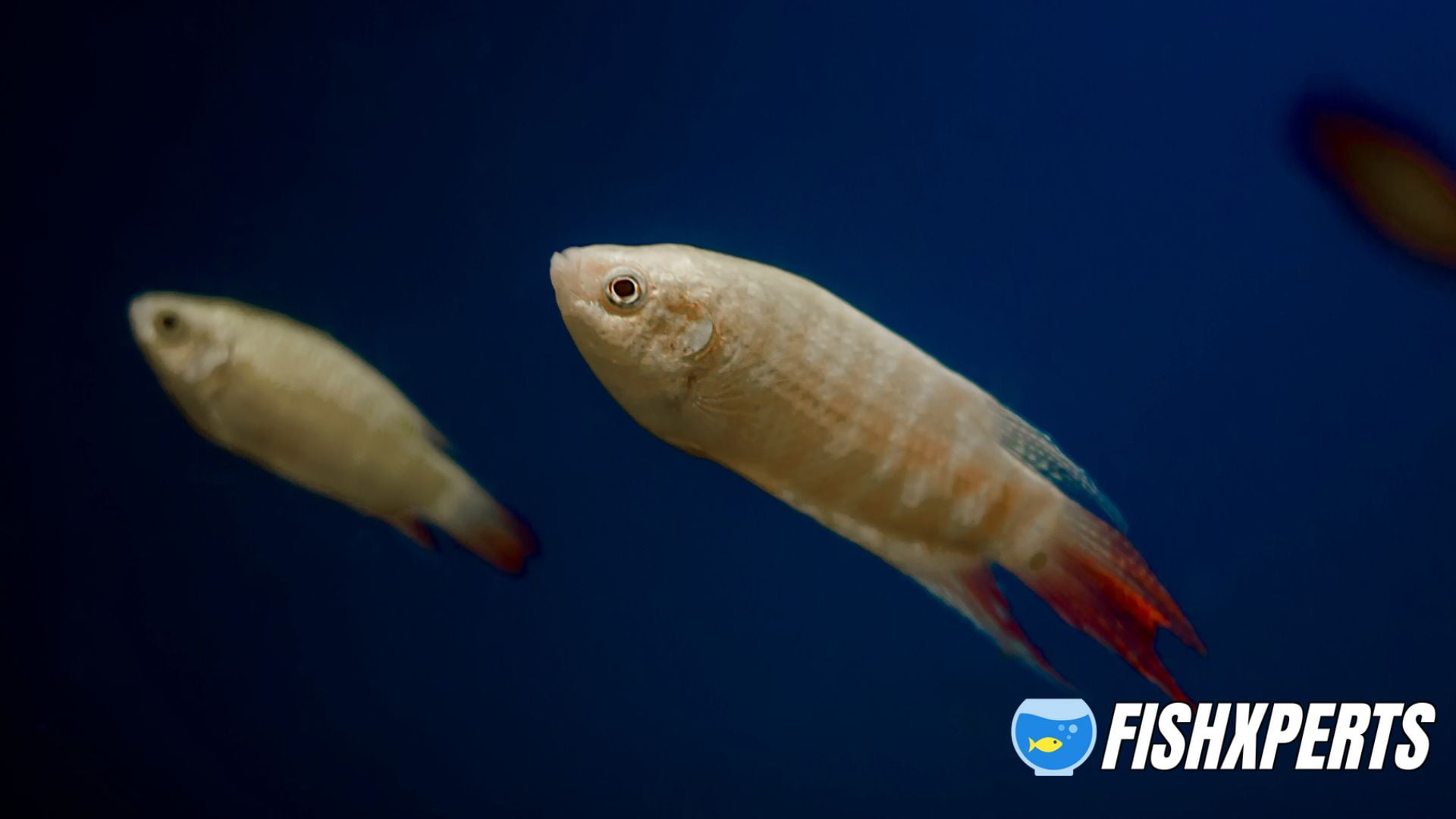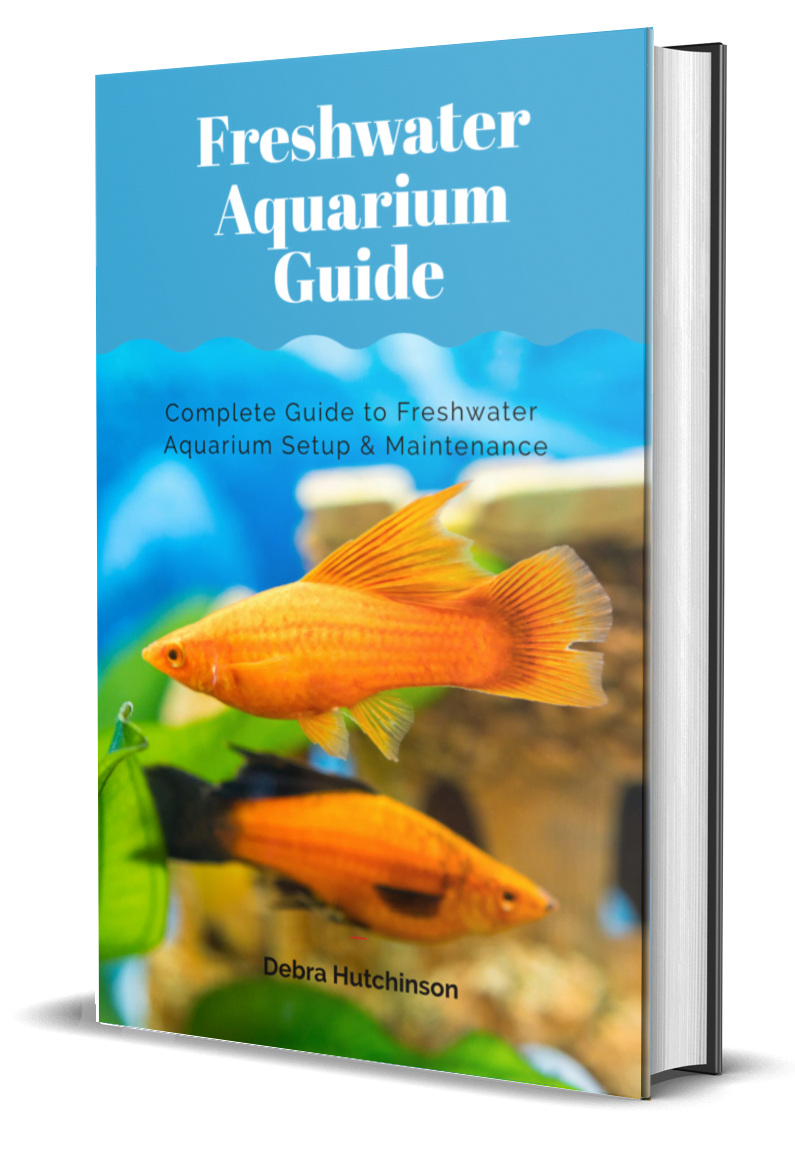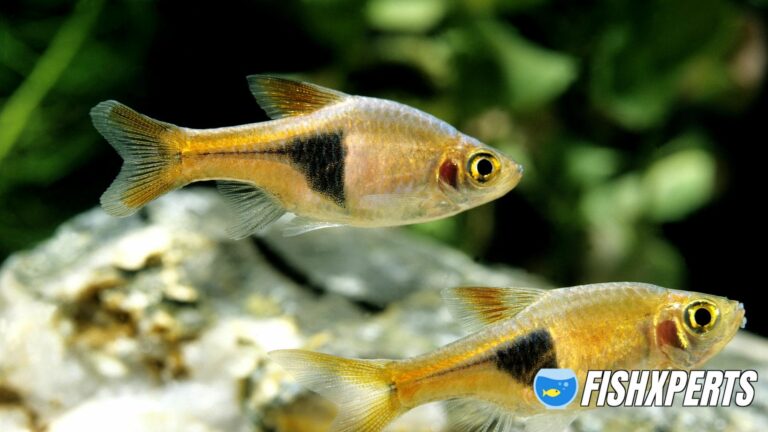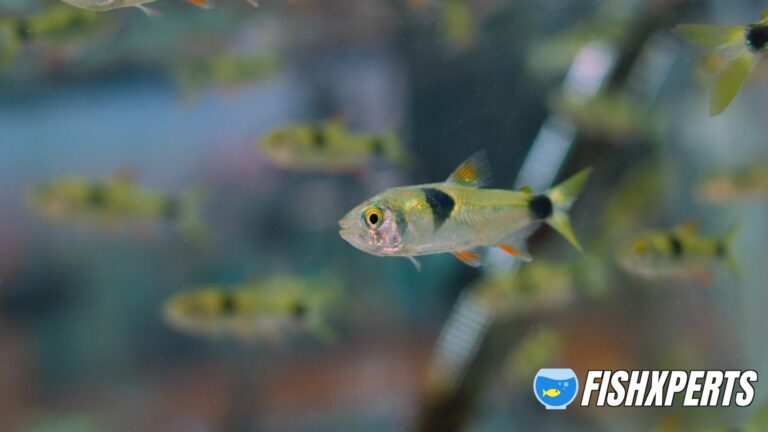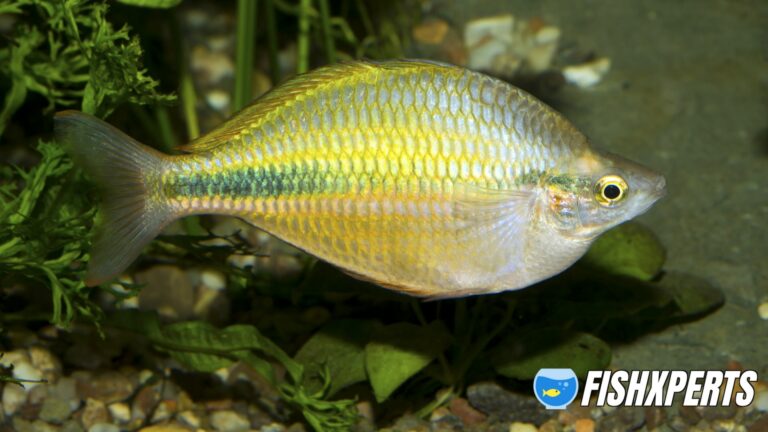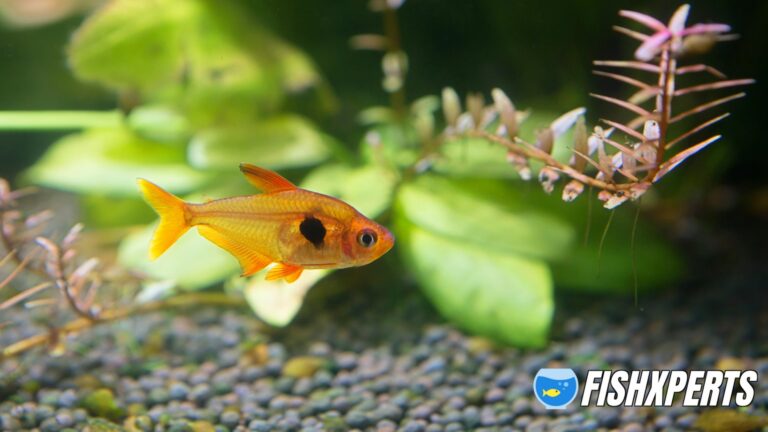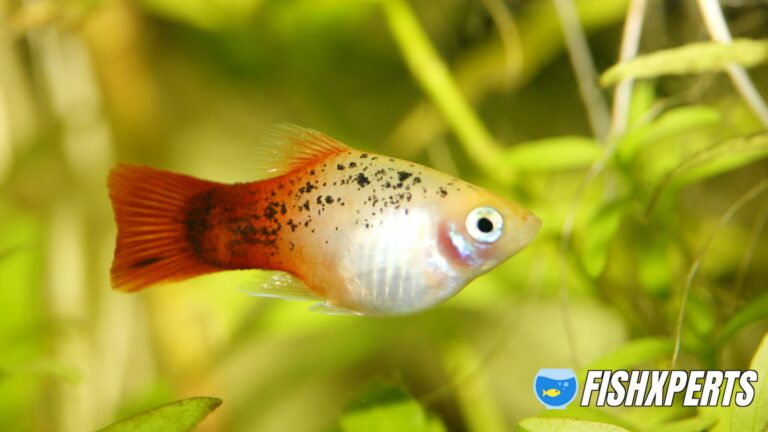Paradise Fish Care
Overview
The paradise fish (Macropodus opercularis) is a species of gourami native to fresh and brackish waters in East Asia. It is a popular aquarium fish and has been introduced to many other parts of the world.
The paradise fish is a small to medium-sized fish, reaching a maximum length of about 15 cm (6 in). It is a laterally compressed fish with a long, ventral fin. The body is greenish-brown to orange in color, with dark vertical bars on the sides. The males are larger and more brightly colored than the females, and also have a more extended ventral fin.
The paradise fish is a labyrinth fish, meaning it has a sac in its throat that allows it to breathe air directly from the surface.
This adaptation allows the fish to live in waters that are low in dissolved oxygen. The paradise fish is also an aggressive fish, known for its territorial behavior. It is best kept in an aquarium with other fish that are of similar size and temperament.
Paradise Fish Care Tips In Brief
Aquarist and Fishkeeping Expert, Rachael O’Sullivan, gives readers tips on how to care for their Paradise fish. She covers topics such as diet, tank mates, and common health problems.
Lifespan
The lifespan of a paradise fish is typically between 3 and 5 years. However, some individual fish have been known to live for up to 10 years in captivity. The average lifespan in the wild is thought to be shorter, due to predation and other factors.
Paradise fish are relatively long-lived compared to other fish species of similar size. Proper care and diet are important factors in maximizing the lifespan of a paradise fish.
Appearance
The paradise fish (Macropodus opercularis) is a brightly colored freshwater fish native to East Asia. It is a popular aquarium fish and can be found in many pet stores. The fish is named for its beautiful fins and tail, which are often brightly colored. The body of the fish is typically a duller color, usually green or brown.
The paradise fish is a medium-sized fish, reaching a maximum length of about 8 inches (20 cm). Females are typically smaller than males. The fish has a lifespan of 5-10 years in captivity.
The paradise fish is a peaceful fish that can be kept with other peaceful fish of similar size. The fish is not recommended for beginners, as it can be aggressive towards other fish and is also known to jump out of tanks.
Average Size
The average size of a paradise fish is around 4 inches (10 cm). However, some fish can grow up to 6 inches (15 cm) in length. The size of a fish is determined by its age, sex, and health.
Paradise fish Tank Size & Setup
The size and setup of your paradise fish tank will determine how successfully you can keep this species. A minimum tank size of 20 gallons is recommended, with a preferred size of 30 gallons or more.
It’s also important to have plenty of hiding places and plants in your tank, as paradise fish like to explore and feel secure in their surroundings. When it comes to filtration, a canister filter is ideal for paradise fish tanks. Be sure to keep up with regular maintenance on your filter and tank to ensure a happy and healthy environment for your fish.
Water Parameters
Aquarium water parameters are measurements of chemical and physical characteristics of water. These measurements are important in determining the suitability of water for different purposes, such as maintaining the health of aquatic plants and animals.
There are a number of different water parameters that can be measured, but the most important ones for the beginner aquarist to be aware of are pH, ammonia, nitrite, and nitrate.
pH is a measure of the acidity or alkalinity of water. The pH scale runs from 0 to 14, with 7 being neutral, below 7 being acidic, and above 7 being alkaline. Most aquarium fish and plants prefer a pH in the range of 6.5 to 7.5.
Ammonia is a toxic compound that is produced by the breakdown of fish waste and other organic matter in the aquarium. Ammonia levels should be kept as close to zero as possible to protect the health of your fish.
Nitrite is another toxic compound that is produced by the breakdown of ammonia in the aquarium. Like ammonia, nitrite levels should be kept as close to zero as possible.
Nitrate is a less toxic compound that is produced by the breakdown of nitrite in the aquarium. Nitrate levels can be allowed to build up to a certain level without causing harm to fish, but levels that are too high can cause problems such as algae growth.
There are a number of ways to measure water parameters, including test kits that can be purchased from most aquarium stores. It is important to test the water regularly to ensure that the levels of ammonia, nitrite, and nitrate are all at acceptable levels.
Decorations and plants
Aquarium decorations and plants play an important role in the overall look and feel of your paradise fish tank. They can also provide your fish with hiding places, spawning sites, and grazing areas.
live plants
Adding live plants to your paradise fish tank is a great way to add color, texture, and interest. They can also provide your fish with valuable hiding places and grazing areas.
There are many different types of live plants available for aquariums, so it’s important to choose ones that are compatible with the water conditions in your tank.
Some popular live plants for paradise fish tanks include:
- Java fern
- Anubias
- Bacopa
- Cryptocoryne
- Echinodorus
- Vallisneria
- artificial plants
If you don’t want to deal with the hassle of caring for live plants, you can always opt for artificial ones instead.
Artificial plants are available in a wide variety of colors, shapes, and sizes. They’re also much easier to care for than live plants, and they won’t add any unwanted nutrients to your tank water.
Some popular artificial plants for paradise fish tanks include:
- Silk plants
- Plastic plants
- Foam plants
- decorations
In addition to plants, there are many other types of decorations that you can add to your paradise fish tank.
Some popular decorations include:
- Rocks
- Caves
- Bogwood
- Driftwood
- Live rock
When choosing decorations for your paradise fish tank, it’s important to choose ones that are safe for your fish and that won’t affect the water quality in your tank.
Adding the right mix of decorations and plants to your paradise fish tank will create a beautiful and inviting environment for your fish to live in.
Filtration
An aquarium filter is a mechanical filtration device used to remove unwanted waste and debris from aquarium water. There are a variety of aquarium filters available on the market, each with its own set of benefits and drawbacks.
Undergravel filters are one of the most popular types of aquarium filters. They are easy to set up and maintain, and they are very effective at removing waste and debris from aquarium water. The downside to undergravel filters is that they can be difficult to clean and they can be a bit noisy.
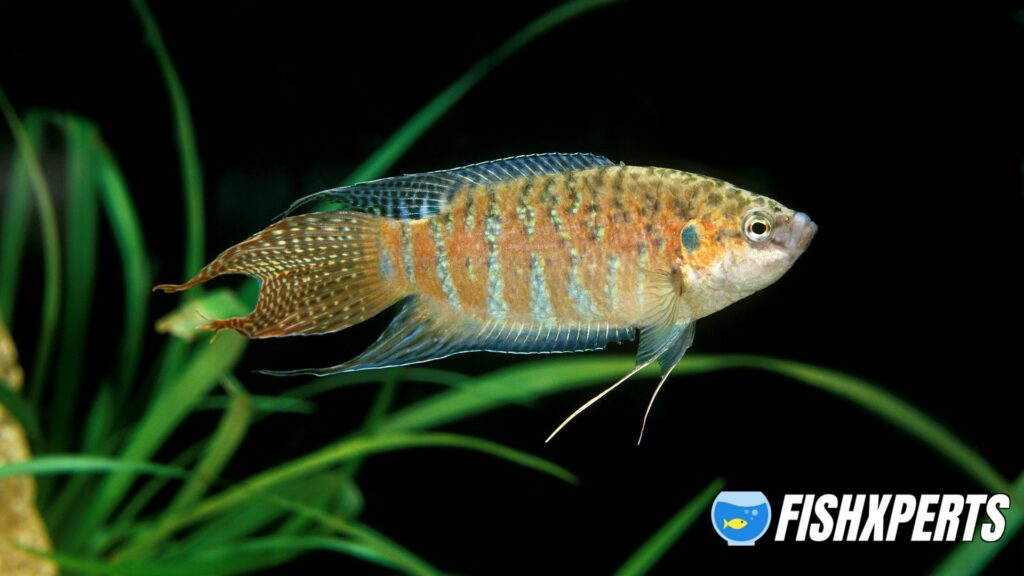
Canister filters are another popular type of aquarium filter. They are very effective at removing waste and debris from aquarium water, and they are relatively easy to maintain. The downside to canister filters is that they can be quite expensive, and they can be a bit difficult to set up.
Power filters are a type of aquarium filter that is easy to set up and maintain, and they are very effective at removing waste and debris from aquarium water. The downside to power filters is that they can be quite noisy.
Wet/dry filters are a type of aquarium filter that is very effective at removing waste and debris from aquarium water. The downside to wet/dry filters is that they can be quite difficult to set up and maintain.
Common Potential Diseases
There are a number of potential diseases that can affect paradise fish.
Some of the more common ones include:
Ich: Also known as white spot disease, ich is a parasitic infection that can cause white spots to form on the fish’s body. It is often fatal if left untreated.
Fungal infections: These are common in aquarium fish and can cause a variety of symptoms, including lethargy, loss of appetite, and white patches on the skin.
Bacterial infections: Bacterial infections are another common type of aquarium fish disease. Symptoms can include Finrot, which causes the fins to become red and frayed, and Dropsy, which causes the fish’s abdomen to swell.
Viral infections: Viral infections are relatively rare in aquarium fish, but they can occur. The most common type is the Herpes virus, which can cause sores and ulcers on the fish’s body.
Food & Diet
When it comes to food and diet, paradise fish are not picky eaters and will accept a variety of food items. In the wild, their diet consists of small insects, crustaceans, and other small aquatic creatures. In the aquarium, they can be fed a variety of live, frozen, and dry foods.
Live foods such as brine shrimp, bloodworms, and daphnia are all excellent choices and will be eagerly accepted by paradise fish. Frozen foods such as krill, mysis shrimp, and glassworms are also good options and can be offered a few times a week.
Dry foods such as pellets and flakes can be offered on a daily basis, but should be supplemented with live or frozen foods to provide a well-rounded diet.
As with all fish, it is important to offer a variety of foods to ensure a balanced diet and to prevent boredom. Mixing up the diet will also help to ensure good health and vitality in paradise fish.
Behavior & Temperament
Paradise fish (Macropodus opercularis) are peaceful, gregarious fish that make good community tank mates. They are not aggressive and will not bother other fish in the tank. However, they are known to be nippy and may nip at the fins of other fish. They are also known to be jumpers, so a lid on the aquarium is a must.
Paradise fish are active fish and are constantly on the move. They are curious and will investigate anything new in their environment. They are also known to be good parents and will care for their young.
The temperament of paradise fish can vary depending on the individual fish. Some fish may be more nippy than others, while some may be more laid back. It is important to observe the individual fish before making any decisions about its temperament.
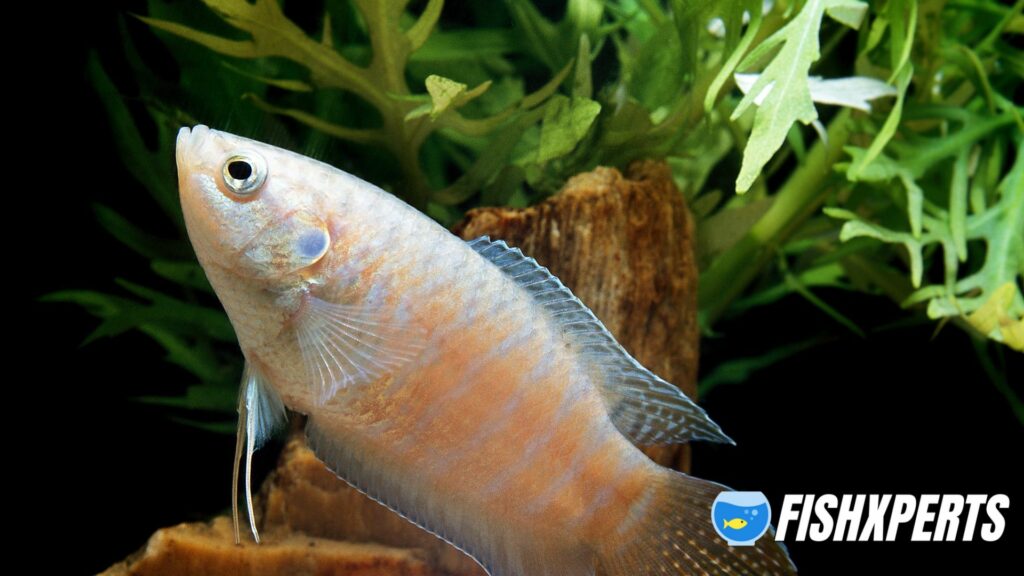
Paradise Fish: Interesting Facts & Stats
- A paradise fish’s natural habitat is in slow-moving waters in Southeast Asia, including rice paddies, ditches, and ponds.
- In the wild, paradise fish eat small insects and crustaceans.
- In captivity, paradise fish will accept a variety of live, frozen, and freeze-dried foods, as well as flake and pellet foods.
- Adult paradise fish are typically 3-4 inches in length.
- Paradise fish are considered to be semi-aggressive, and can be territorial towards other fish.
- Paradise fish are not considered to be good community fish.
- Paradise fish are considered to be easy to care for, and are a good choice for beginner aquarium owners.
Tank Mates
The following is a list of potential tank mates for paradise fish:
Gouramis – Gouramis are a peaceful and popular choice for paradise fish tank mates. They come in a variety of colors and sizes, and can make a beautiful addition to any aquarium.
Barbs – Barbs are another popular choice for paradise fish tank mates. They are active and playful, and can help keep your paradise fish entertained.
Danios – Danios are a hardy and peaceful fish that make a great choice for paradise fish tank mates. They come in a variety of colors and patterns, and are sure to add some excitement to your aquarium.
Catfish – Catfish are a good choice for paradise fish tank mates because they are peaceful and low-maintenance. They come in a variety of shapes and sizes, and can help keep your aquarium clean.
Breeding & Mating
The paradise fish is a beautiful and popular freshwater aquarium fish. These fish are easy to care for and make great additions to any community tank. While paradise fish are not the most active swimmers, they are very interesting to watch and make great conversation starters.
If you are thinking about breeding paradise fish, there are a few things you should know. These fish are not difficult to breed, but they can be aggressive towards each other and their fry (baby fish). It is best to set up a separate breeding tank for your paradise fish.
To encourage breeding, you can raise the water temperature in the breeding tank to 75-80 degrees Fahrenheit. You will also need to provide hiding places for the fry (baby fish). Live plants are a great option, as they will also help to keep the water clean.
Once the female paradise fish is ready to lay her eggs, she will attach them to a plant or piece of decoration in the tank. The male paradise fish will then fertilize the eggs. The eggs will hatch in about 5-7 days.
The fry (baby fish) will be very small and delicate when they first hatch. They will need to be fed small live foods, such as baby brine shrimp or microworms. As they grow, you can start to feed them crushed flake food or pellets.
Paradise fish can be aggressive towards each other, so it is best to remove the adults from the tank once the fry have been born. The fry can be kept in the breeding tank until they are large enough to be moved to a community tank.
If you provide the proper care, your paradise fish will thrive and reproduce in your home aquarium. These fish are a great addition to any freshwater tank.
FAQ
Can paradise fish live in a bowl?
No, paradise fish should not be kept in a bowl. They require a tank of at least 20 gallons with plenty of hiding places and a filter.
Are paradise fish a community fish?
No, paradise fish are not a community fish. They are not social animals and prefer to live alone. They are also territorial and will fight with other fish if they are kept in the same tank.
Can Paradise fish be kept together as groups?
Yes, Paradise fish can be kept together in groups, but they may sometimes quarrel with each other. They are best kept in a group of at least four fish, with two males and two females being the ideal ratio.
How Big Do Paradise Fish Get?
paradise fish typically grow to be about 6 inches in length. However, if you provide them with a large enough tank and plenty of food, they can grow up to 8 or 9 inches long.
How Can You Tell a Male Fish from a Female Fish?
Paradise fish grow to an average size of 4-6 inches. However, some specimens have been known to reach up to 8 inches in length. Therefore, when choosing an aquarium for your paradise fish, be sure to choose one that can accommodate a fish of this size.
Are Paradise Fish Aggressive?
Yes, paradise fish are aggressive. They are known to be territorial and will often attack other fish that they perceive as a threat to their territory. In addition, they are also known to be aggressive towards their own species and will often fight to the death.
If you are considering keeping paradise fish in your aquarium, it is important to remember that they will need plenty of space to themselves and should not be kept with other aggressive fish.
Why Do Paradise Fish Build Bubble Nest?
There are a few reasons why paradise fish build bubble nests. One reason is to protect their eggs from predators. The bubble nest also provides oxygen to the eggs and keeps them warm. Another reason is that the male paradise fish build the nest to attract a female. The male will care for the eggs until they hatch and then the fry will be on their own.
Do Paradise Fish Breathe Air?
Yes, paradise fish do breathe air. In the wild, they typically live in slow-moving or stagnant water that doesn’t have a lot of dissolved oxygen.
To get the oxygen they need, they surface and gulp air through their mouths. In the home aquarium, they should have access to the surface of the water so they can do the same thing.
How to Treat Sick Paradise Fish?
There are a few things you can do to treat sick paradise fish. First, you’ll want to remove the fish from the tank and place it in a hospital tank. This tank should have similar water conditions to the main tank. Next, you’ll want to treat the fish with a medication that is effective against the specific illness it is suffering from.
Be sure to follow the instructions on the medication label. Finally, you’ll want to monitor the fish closely and make sure it is eating and that the medication is working. If the fish does not improve, you may need to consult a veterinarian.
What temperature do paradise fish like?
The ideal temperature for paradise fish is between 72-78 degrees Fahrenheit.
Do paradise fish get lonely?
No, paradise fish do not get lonely. They are a solitary fish and do not need the company of other fish to be happy.
Do paradise fish eat shrimp?
No, paradise fish typically do not eat shrimp. They are carnivorous fish and prefer to eat small insects and other meaty foods. However, if you are offering them live food, they may nibble on the occasional shrimp.
Final Thoughts
If you’re looking for a beautiful and easy-to-care-for fish, the paradise fish is a great choice. These fish are relatively hardy and can adapt to a wide range of water conditions, making them ideal for both beginners and experienced aquarists alike. While they can be aggressive towards other fish, they are typically peaceful towards humans and make great additions to any aquarium.
Topics Covered

